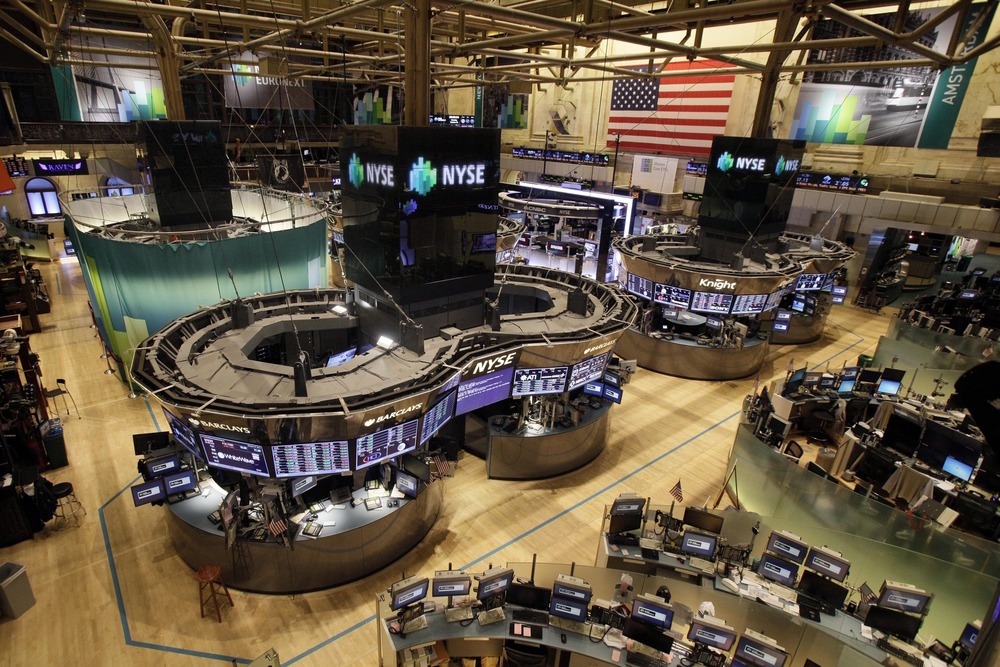
Dow Futures show a slight increase as the market anticipates the release of a significant inflation report, which may influence Federal Reserve policymakers’ outlook on the trajectory of interest rates for the remainder of the year. President Donald Trump has announced a new set of tariffs, which include duties on branded or patented pharmaceuticals. Reports indicated that the Trump administration is considering strategies to diminish the nation’s dependence on semiconductor imports.
Dow Futures indicated an upward trajectory on Friday, as investors prepared for the impending release of new inflation data while processing a recent tariff announcement from Trump. As of 03:02, the Dow futures contract experienced an increase of 73 points, representing a 0.2% rise, while S&P 500 futures saw a gain of 9 points, or 0.1%. Additionally, Nasdaq 100 futures recorded an advancement of 16 points, also reflecting a 0.1% increase. The primary indices on Wall Street experienced a decline on Thursday, influenced by robust economic indicators, notably a decrease in weekly jobless claims and a revised increase in second-quarter gross domestic product. The figures have tempered expectations regarding the extent of potential further cuts to Federal Reserve borrowing costs throughout the remainder of 2025, while yields on rate-sensitive short-dated U.S. government bonds have risen. Yields typically exhibit an inverse relationship with prices. In individual stocks, shares in Jabil declined despite the electronics component maker providing a profit and revenue forecast for its fiscal year 2026 that exceeded expectations. Analysts noted that Jabil’s returns, similar to those of semiconductor company Micron earlier this week, fell short of expectations, dampening some of the heightened enthusiasm surrounding artificial intelligence.
Attention now shifts to the release of the August personal consumption expenditures price index, which may provide insights into the direction of U.S. inflation and influence the Federal Reserve’s strategy in its remaining two policy meetings of the year. Analysts expect that the core PCE inflation rate will decrease to 0.2% month-over-month, aligning with July’s annualized rate of 2.9%. Federal Reserve policymakers frequently scrutinize this metric to assess the condition of price increases in the largest economy globally. Officials at the central bank have emphasized the necessity of adjusting rates to strike a balance between the persistent threat of inflation and the deceleration of the labor market. Market participants are assigning an approximate 88% likelihood to a 25-basis point reduction in the Federal Reserve’s interest rate at its forthcoming meeting in October, alongside a 62% chance of a comparable decrease in December. Upside surprises in the final U.S. GDP numbers and jobless claims complicate consensus among markets regarding forthcoming Fed cuts. “A benign PCE reading on Friday won’t change that,” analysts said, adding that a monthly jobs report next week “should be more pivotal.”
European and Asian drugmakers experienced a decline in share prices on Friday following Trump’s announcement of a new set of tariffs, which imposed 100% duties on branded or patented pharmaceuticals. Novo Nordisk, Roche, Novartis, and AstraZeneca experienced slight declines in Europe, whereas Samsung Biologics, SK Biopharmaceuticals, and Sumitomo Pharma were among the underperformers in Asia. On Thursday, Trump detailed a series of tariffs set to commence on October 1, which included a 25% duty on imported heavy-duty trucks, alongside tariffs on kitchen cabinets and upholstered furniture. The measures were articulated as being designed to safeguard domestic industry and ensure national security. In a note, analysts indicated that the announcement serves as “a reminder that, while country-level ’reciprocal’ tariffs are starting to take shape, product-specific tariffs remain a threat.”
European and Asian technology stocks and chipmakers experienced a downturn following a report indicating that the U.S. administration is considering measures to lessen the nation’s dependence on semiconductor imports by enhancing domestic manufacturing capabilities. The White House is contemplating a policy that would mandate U.S. technology companies to align their domestic semiconductor production with imports, or alternatively, incur tariffs. The proposed plan may adversely affect foreign tech stocks by limiting U.S. demand for overseas semiconductors, thereby exerting pressure on margins and contributing to trade uncertainty. Dutch lithography equipment manufacturer ASML experienced a slight decline in early European trading, while other regional semiconductor companies such as ASM International and Infineon saw reductions exceeding 1%. In Asia, the leading contract chipmaker Taiwan Semiconductor Manufacturing Co exhibited stability following a decline of up to 2%. South Korea’s Samsung Electronics stock experienced a decline of 3.3%, whereas SK Hynix shares saw a more significant drop of 5.6%.
Gold prices exhibited minimal movement, stabilizing following a decline from record peaks, as new tariff measures in the U.S. maintained a prevailing inclination among traders towards safe havens. Anticipation surrounding the crucial PCE data has maintained a relatively strong demand for gold. Persistently high inflation could reduce the Federal Reserve’s motivation to lower interest rates. Nonetheless, the yellow metal remains positioned for weekly gains following a succession of recent all-time highs, supported in part by expectations for additional Federal Reserve rate cuts this year. Bullion typically exhibits superior performance in a context characterized by reduced borrowing costs. In other developments, oil prices experienced an increase, positioning them for a significant weekly gain, driven by assaults on Russia’s energy infrastructure and an unexpected decline in U.S. crude inventories, which have tightened the market perspective.
